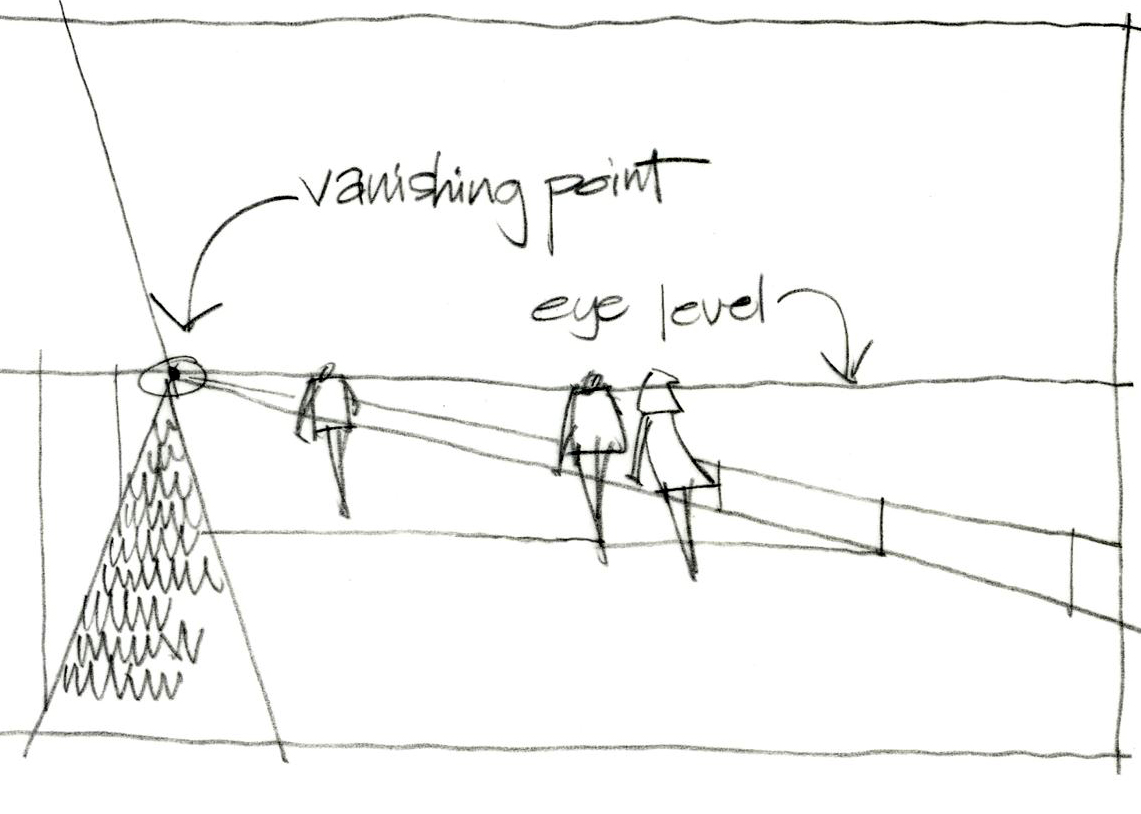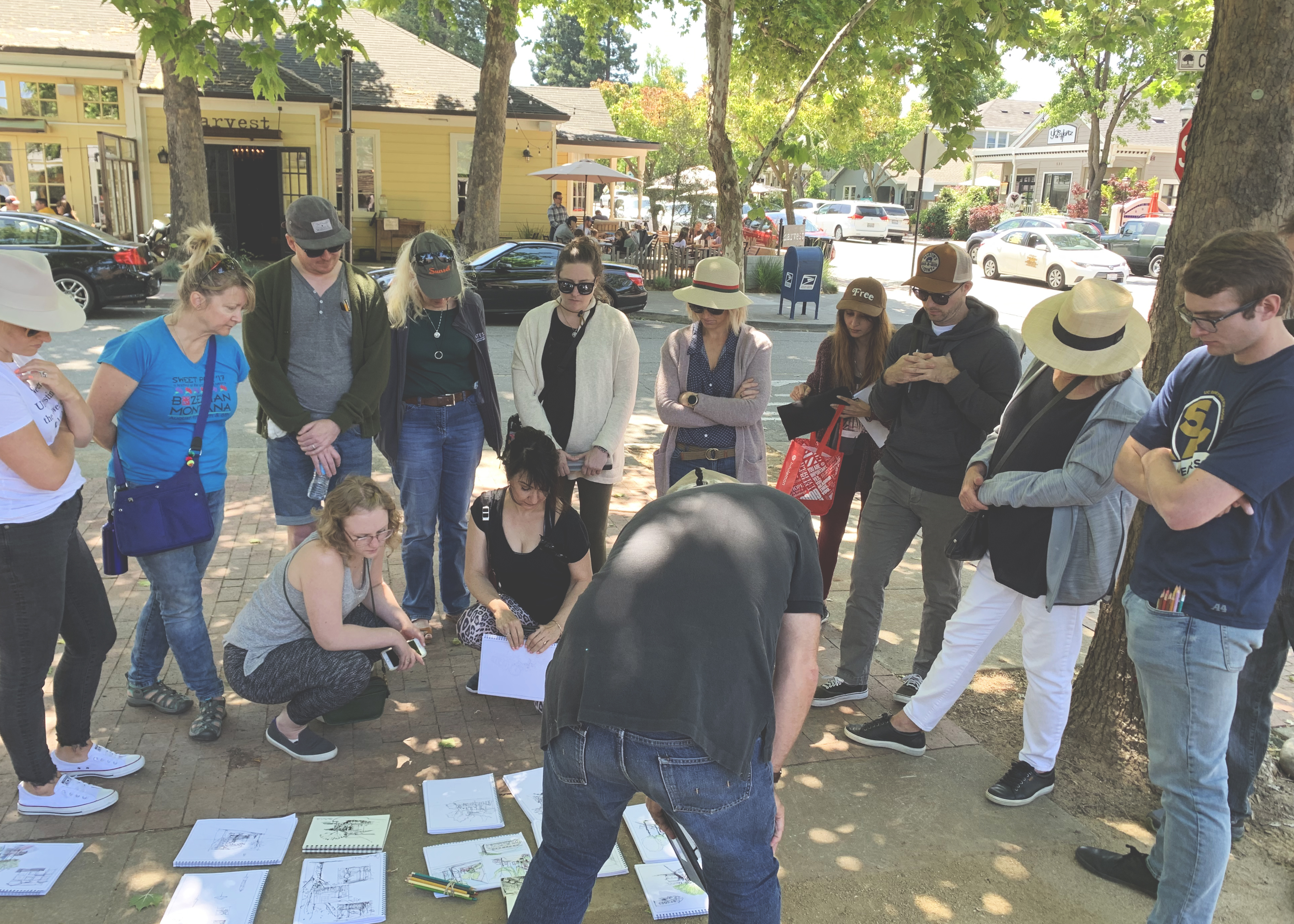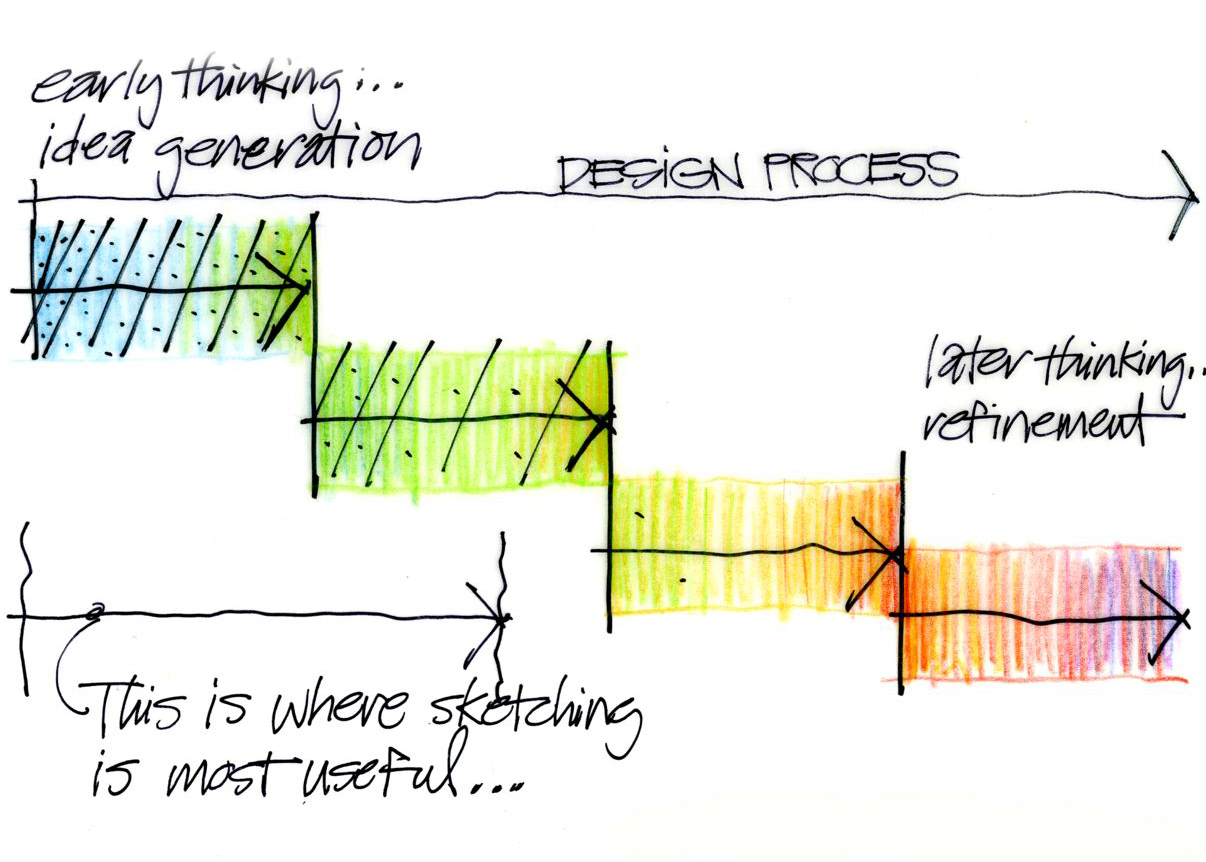A few weekends ago, Gatesters set out to brush up on their sketching skills with James Richards.
James is a fellow urban designer as well as a travel artist, professor of Landscape Architecture, founder of Townscape Inc., and author of the award-winning book Freehand Drawing and Discovery: Urban Sketching and Concept Drawing for Designers.
He stays active in the creative community: this summer he will be hosting various sketching workshops in the UK and at the International Urban Sketching Symposium in Amsterdam. He often visits college campuses as a guest lecturer and will be at the ASLA National Conference in the fall.
Check out his Instagram page to see what he is currently up to!

DAY 1

The Gates team learned the fundamentals of analyzing a space to represent it visually. Exercises covering basics such as horizon lines, comparative measurements, composition, visual textures, and perspective, helped us better understand how to break down space in quick and effective ways. Drawing simple components such as trees, people, and cars allowed us to see those moving parts as building blocks to assemble a composition. James suggested adding people to our drawings early in the process to humanize the space, provide scale, and keep us from being alone!
At one point in the afternoon, James showed us a beautiful sketch he had drawn of a central square somewhere in Europe. A monumental marble horse stood on a pedestal. Someone commented, ‘I wouldn’t know how to draw a horse…’
James’ response was that he didn’t know how to draw one either. He practiced “learning how to draw shapes instead of learning how to draw things.” He didn’t draw the horse or the shrubs behind it, but he simplified them into the forms and lines of which they were composed. He didn’t draw the intricate building façade behind the horse but he “traced the sky” around it. Major architectural features were reduced to their character rather than every detail and proportion. This – draw shapes not things – is a positive way to approach complex visuals when sketching.
DAY 2
On the second day of the workshop we took what we’d learned and applied it to on-site sketching. Our site was Danville, CA and our subjects were the people, places, and spaces within the Downtown (many of which Gates played a part in designing). Sketches ranged from 3 minutes to 30 minutes. At the end of each session we would have a ‘throw down’ of the sketchbooks to discuss the work we had done. It was wonderful to see the different interpretations of the same place spread throughout a dozen sketchbooks. The differences in what people chose to focus on – by representing with more detail, or heavier line weight, or choice in subject matter – was reflective of the unique perspective each person brings to the experience of public space.

HAND DRAWING & DIGITAL PRODUCTION

As the profession becomes increasingly grounded in technological production of drawings, retaining and honoring the fundamentals of hand drawing is important. It is an effective way to quickly explore and communicate ideas to each other and to clients. Drawing our surroundings gives us a visual vocabulary to help broaden our understanding of this world and apply to intentional, creative, space making. Hand graphics and digital production are often subtly viewed as two things competing against each other.
“In my [James’] experience, the essential tools are openness, imagination and the creative impulse. Then it becomes a matter of choosing the best tools for where you are in the creative process. At the beginning of the process, one needs to generate a lot of ideas quickly, and to be able to record and communicate a flow of ideas as they occur. Rapid hand sketching remains the most effective way of doing that. Very soon afterward, it’s important to be able to quickly explore concepts in three dimensions and in much greater levels of detail—these are applications where the computer is indispensable. The best designers in many creative fields have learned to merge the advantages of computer technology with the speed, creative flexibility and human appeal of hand drawing. So, it’s not a matter of choosing one method of working over the other. It’s about using the tool and techniques that are most appropriate for where you are in the creative process. It’s not “either/or,” it’s “both/and!”

With Gates’ goal of “getting people outside,” the weekend was also an important reminder for us to take small breaks from the computer and get outside and sketch what is in front of us!
We encourage you to do so as well.




JAMES’ HAND SKETCHING TIPS & TRICKS
“Copy! Collect and study books or websites on sketching with drawings that speak to you. Spend time analyzing, copying and even tracing the drawings you like to develop a feel for what it takes to create the lines, tones and textures that are attractive to you. This is how beginners in any creative field work towards mastery. Don’t worry about compromising your own style; your individuality will always come through. Do this a few times, then head outdoors and try your hand at capturing scenes that beg to be sketched.”
“Practice! Make a decision to produce a drawing a day for six weeks. And give yourself short time limits. It’s better to draw 5 minutes every day than an hour once a week. A regular habit of location sketching—producing several drawings a week—is the single most important key to developing the skill, the muscle memory and the confidence to draw with abandon. It’s where we really learn our chops. Remember that redrawing over lines is okay. Mistakes are okay. Drawing the scene any way you want is your reward for getting out there in the first place. Do this, and I promise that you will be amazed at the progress you make.”
“Let the basic rules of perspective drawing inform your sketches, but don’t let “constructing” a technically perfect drawing be your goal. Know the rules, but then draw with abandon, as a child, and your drawings will have a sense of life and authenticity.”
WANT TO SKETCH LIKE A PRO?
Check out James’ go-to sketching materials below
- A fine line pen with waterproof ink—the humble Uni-ball Micro “Eye” (UB-150) is his new current favorite
- A fude nib fountain pen—they have a bent nib, like a calligraphy pen, so that you can create really lively lines and apply dark areas quickly; if you use waterproof ink you can add watercolor washes later
- A Moleskine Watercolor Album is his go-to sketchbook, it gives the option to add watercolor washes and can handle the hustle and bustle of travel
- Prismacolor colored pencils and watercolor pencils
- Sometimes: sharpie + blue pastel

Gatesters at the end of a engaging weekend of sketching (James on the far right)
